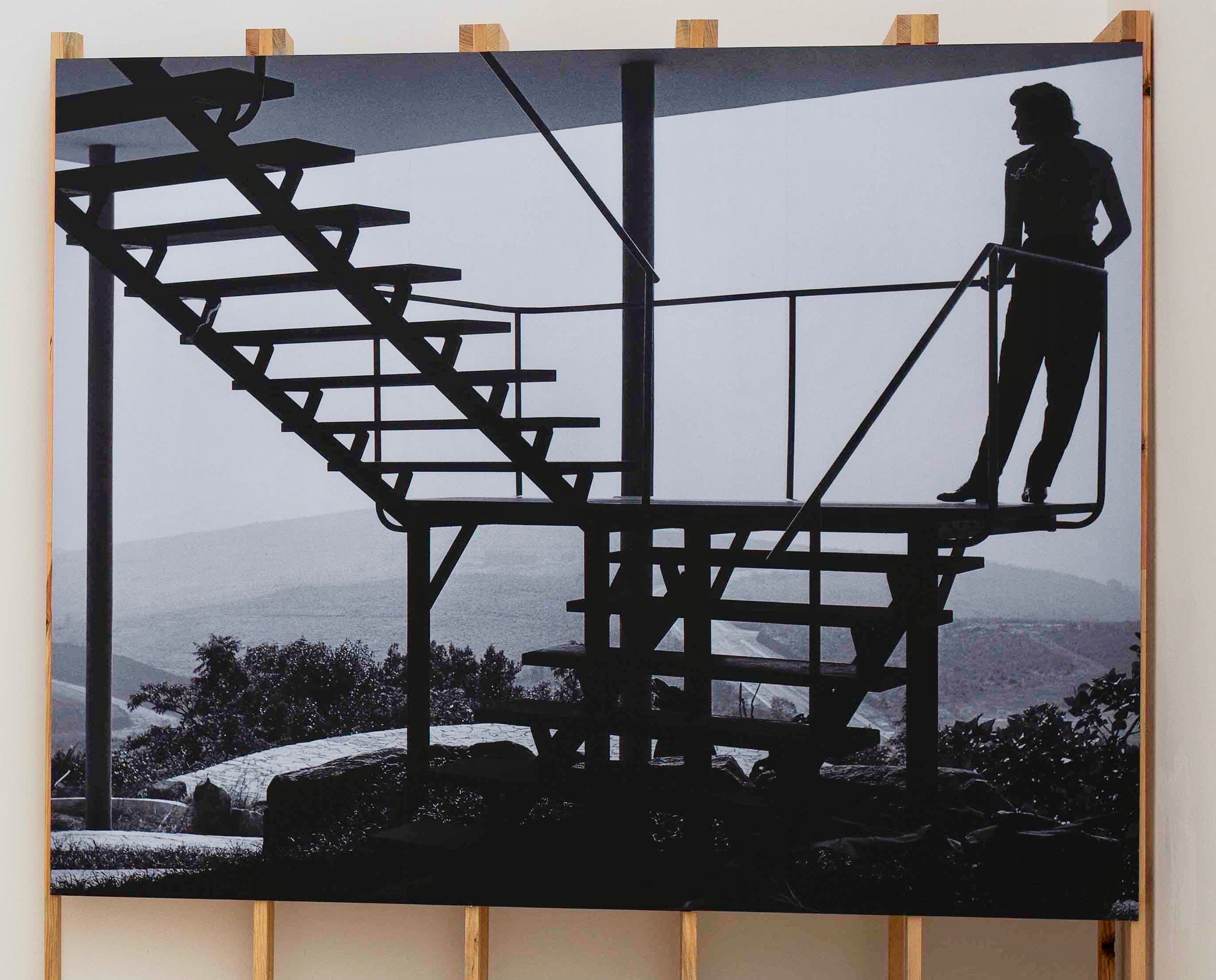
Essay
Sculpting Ways of Finding Ourselves: Lina Bo Bardi
by Ana Torres Valle Pons
At Museo Jumex
Reading time
8 min
Take my hand. Take a step inside with your eyes closed. Slide your fingers along the sculpture seen only by the body; its shape and aroma is the place you now inhabit. Let’s walk together along the invisible paths. Let’s look, scarcely between flickers, at an exhibition in a closed museum. Let’s find, from the stillness of the reading body—that’s also the stillness of waiting—the paths traced by Lina Bo Bardi, so that we might traverse house, body, museum, and territory.
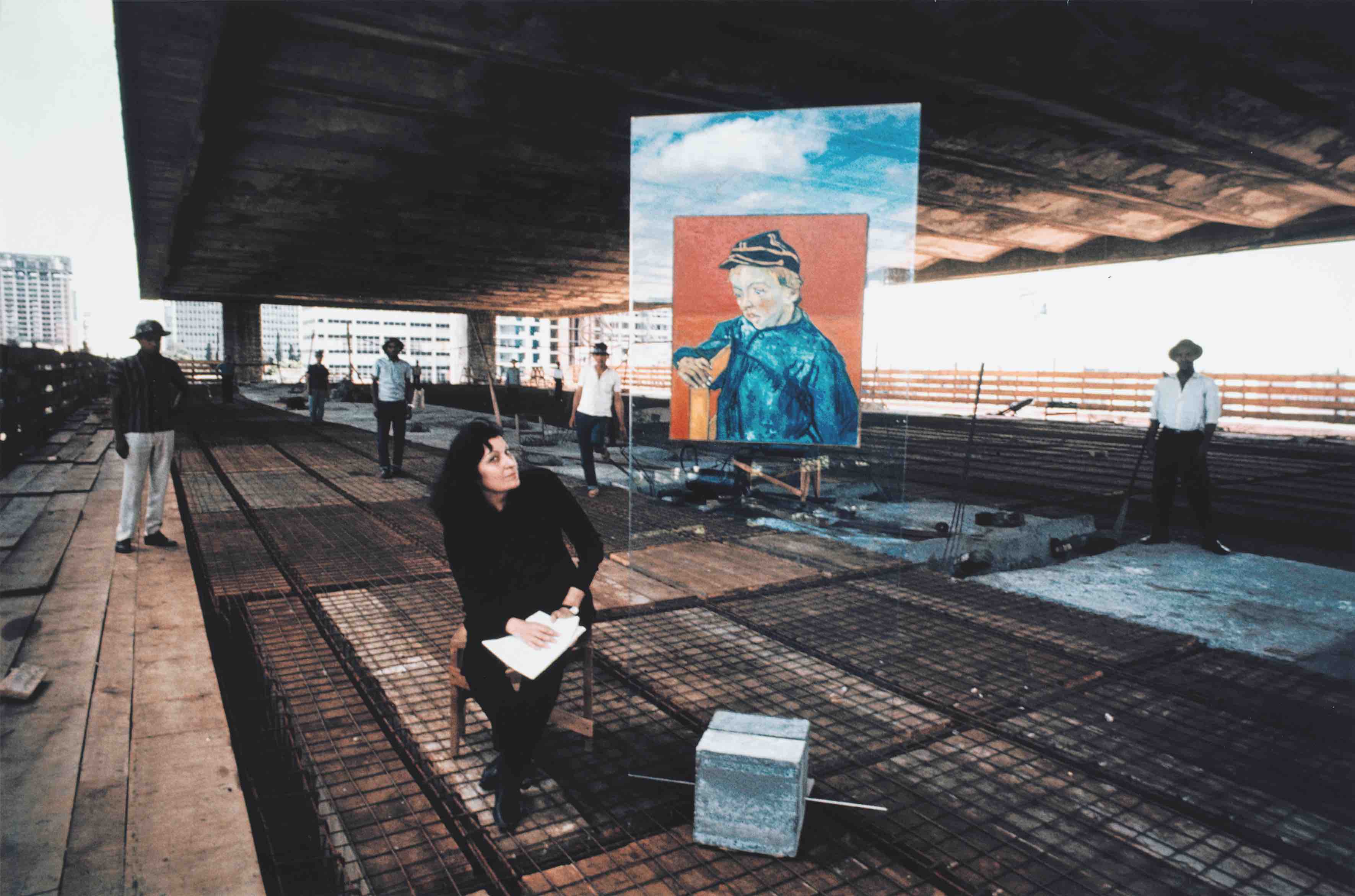
The exhibition Lina Bo Bardi: Habitat, presented at Museo Jumex, opens windows onto a distant territory, between the lines of drawings of constructed landscapes, in which imagined environments sprout up in order to reconstruct a devastated world. This retrospective, curated by Julieta González, José Esparza Chong Cuy, and Tomás Toledo, combines Lina Bo Bardi’s architectural conceptualization drawings with her work as editor of and writer for the magazine Habitat, with the aim of offering an overview of her revitalizing, playful, critical, and synthetic vision of the power of art in modern Brazilian society.
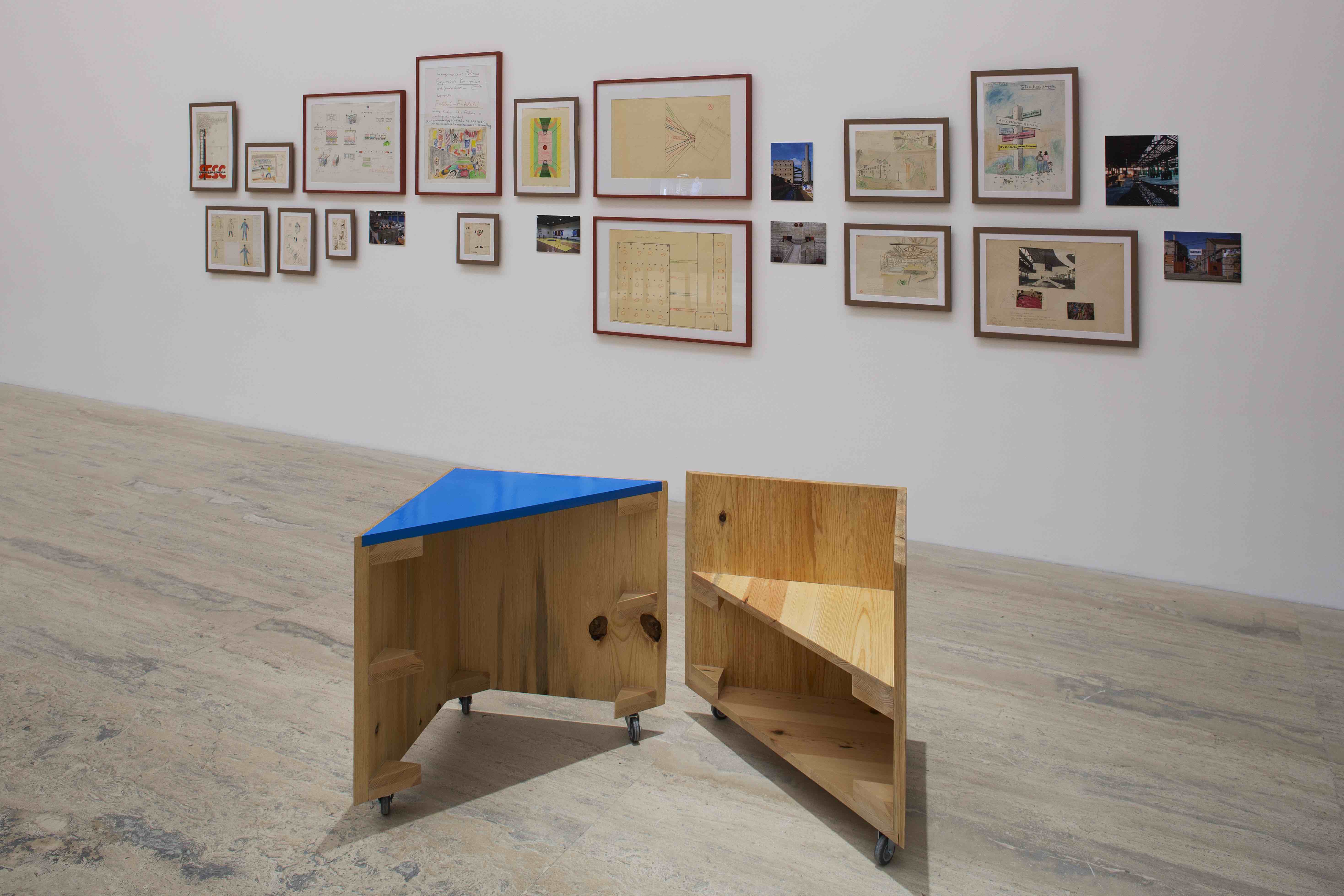
Beyond an architecture focused on the material deployment of a spatial concept, Lina Bo Bardi’s work points to the experience of our inhabiting, to the conversation between house and body, in which appear the places of mirage and the marks of mutual transformation. An architecture always in dialogue with nature, one that “would like to have its feet covered by earth,” (*) waiting for its inhabitants. Lina’s architecture embraces bodies as a theater embraces its actors, or a territory its inhabitants.
At the exhibition, people surround the drawings and collages that accompanied her architecture. In Bo Bardi’s drawings there’s a coming-and-going between ink and color, between the rapid condensation of a sketch and an interlude in the unfolding of the project’s total vision. Her drawings play with the limits of architectural graphics. In the middle of the abstract space, amidst the composition of volumes and heights, appears a habitable site within the space of the page.
The structures’ smooth concrete surfaces, aerial views, and cross-sections are also tinged with the different hues of living. Colors are mixed together; there appear plants, beams, people, art, children, animals, glass. The scenes drawn around her architecture unfold as a graphic premonition of life in her buildings.
Sculptures for the Encounter
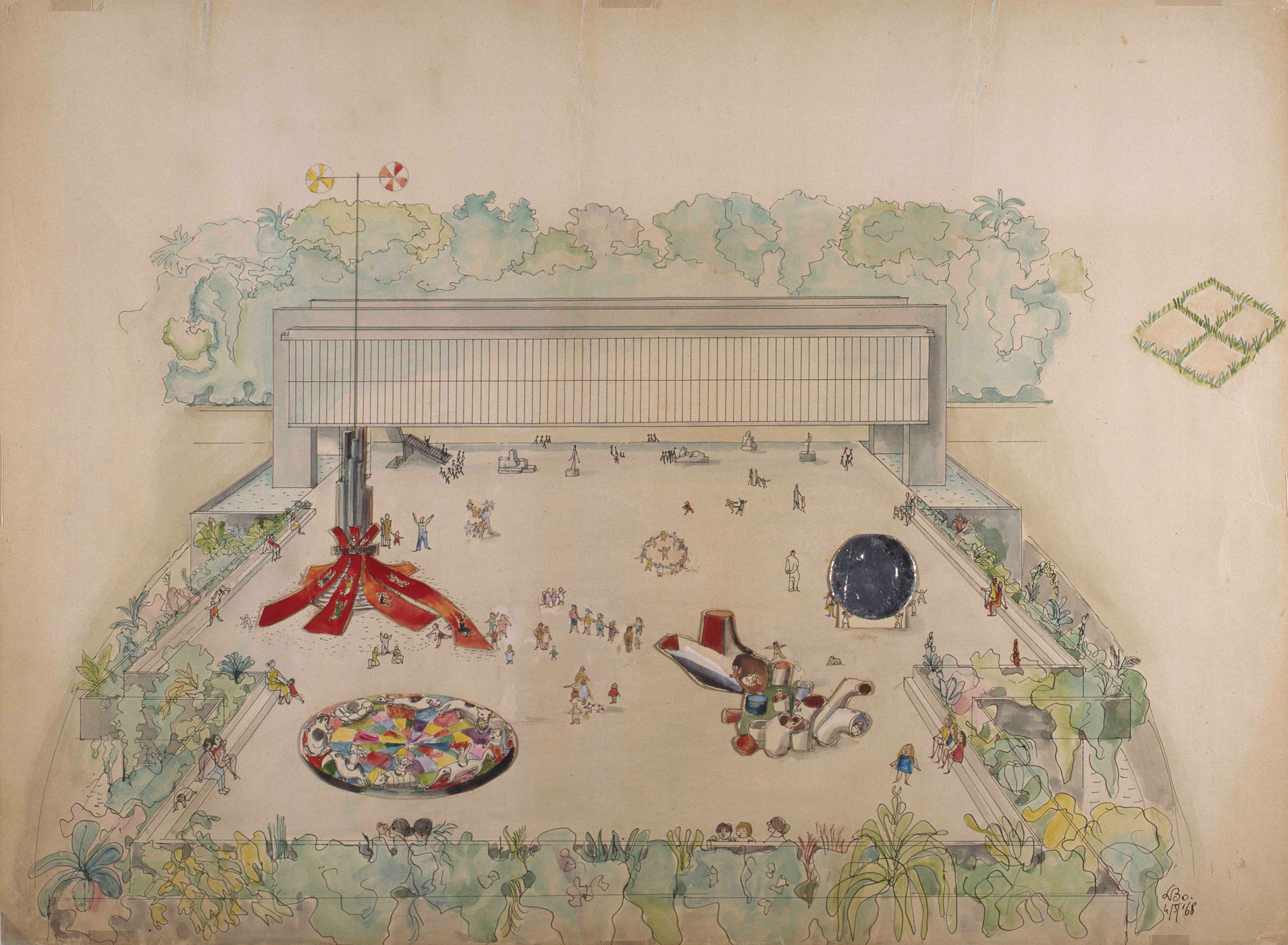
How does an architecture of freedom unfold? What encounters are elicited in an architecture that embraces the territory? What’s transformed by the gesture of our presence?
Far from a retinal architectural exercise, Lina Bo Bardi’s work opens up questions about how to cultivate a new personal poetics regarding body, landscape, and territory. We are witness to a look at the constructed space that weaves together soil, climate, environment, and life (*2), that explores and sculpts territories in which the act of inhabiting is our relation to the world (*3). In the calm traversal around the corners of each map we find a way to return home, to find inside it something missing. Architecture that speaks to the body is always inhabited from the experience of the present.
In the MASP (São Paulo Museum of Art) project, completed in 1947, a grammar is unfolded that accompanies her architectural thought. Thin pairs of steel beams suspend a glass and concrete body. The concrete, which Lina treated like a living material,(*4) is deployed on a plaza, where it gravitates; in her drawings it is tinged with vegetation.
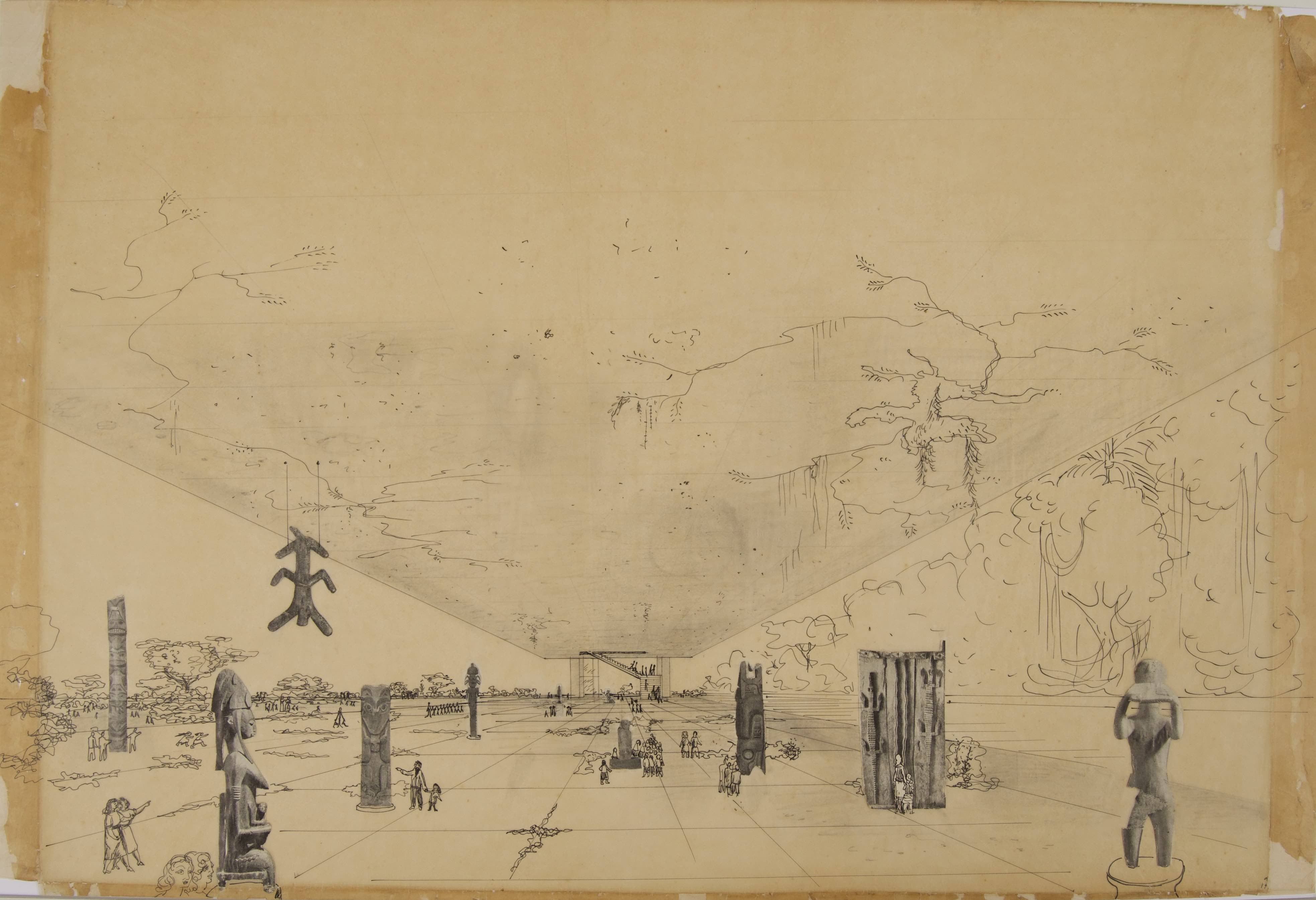
MASP is also a window-shaped space; its interiors face outwards. The concrete body, with the transparency of floating glass, opens up in a kind of hospitality, in order to serve as an intermediary between landscape and museum, art and territory.
The glass easels designed by Bo Bardi hold suspended the works in the MASP’s pictorial collection, in a play of transparencies and overlays. Within a space of continuous windows, the works detained by the glass seem to exist without architecture, floating within the territory, in that way undeniably linked to its space and to its present.
In the MASP plaza, Lina sought to create an atmosphere in which “the people would go there to see open-air exhibitions, to discuss, to listen to music, to see films. I would like for children to go play in the morning and afternoon sun. And I would even like for it to be a place open for concerts”(*5). The balance between subtlety and monumentality, between openness and functionality, articulates a site in which can sprout collective dwellings and affects, within this sculpted space: a denial of protagonism, an architecture of experience. In Lina’s words, “the museum was a nothing, a search for freedom, the removal of obstacles, the ability to be free from things.”
The Body House
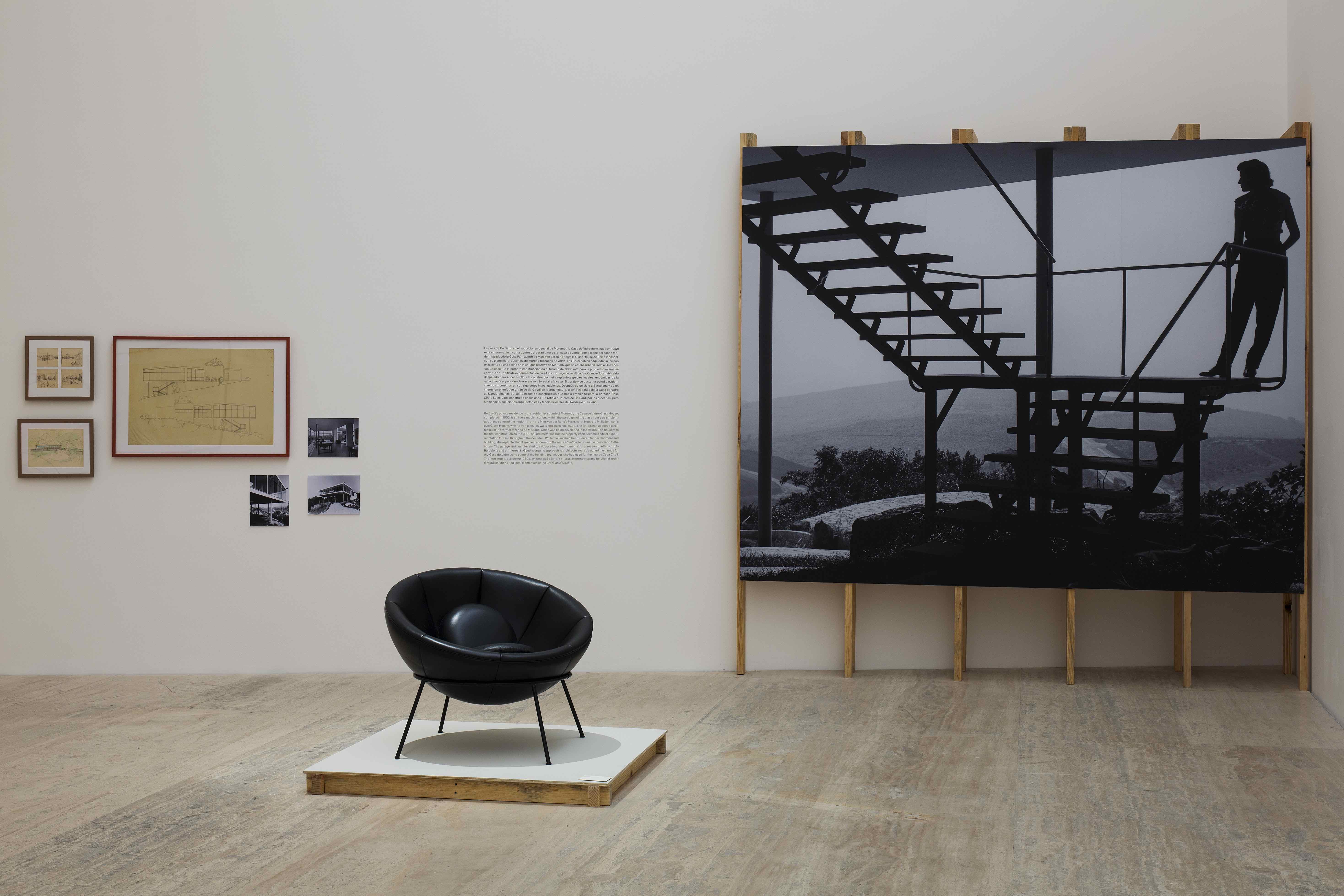
Which comes first, the house or the museum? (*6) Is any architecture, at bottom, a house? How is an architecture in harmony with nature?
The body, like a comet tied to the ground, draws the shape of a house with its string. Joined to the earth, people trace a map inside the territory. Each construction appears as a habitable landscape, a framework of the earth configured for our body. In the calm rounds around the corners of that map we find a way to return home, to find inside it something missing: the territory in its intimacy and in its grandeur.
The Casa de Vidro (“Glass House”), Bo Bardi’s own residence in São Paulo, completed in 1951, displays Lina’s thinking about housing as it is linked to harmony with the earth. On subtle steel pilings, emerging from a hill, rests a concrete body that opens, intermittently, onto the transparency of the continuous windows surrounding it.
The house is a territory sculpted for intimacy, a body that shapes our own bodies and that makes possible a certain inhabiting. For Lina, this house is “an attempt at communion between nature and the natural order of things: it opposes to the natural elements the least number of means of defense, and tries to respect that natural order with clarity, and tries never to be a closed house that flees from the storm and the rain, fearful of other human beings.”(*7)
Video by ArchDaily allowing for an immersive view of the spaces of the Casa de Vidro (“Glass House”).
The Bo Bardi Casa de Vidro maintains a deep link with the territory, where our intimate world and the outside embrace each other. At the time of its construction, its wide windows offered a panoramic view of the hills and the horizon, as an observatory of the territory and its breadth, anchored in the then-suburbs of São Paulo. The Casa de Vidro, now surrounded by vegetation, is an observatory of the territory in its vicinity: life unfolds around its architecture. A house that is deployed as an instrument for facing and witnessing the cosmos (*8), for inhabiting from our intimacy its transformations.
The work of Lina Bo Bardi, evoked in this retrospective exhibition, offers us a look at a rejuvenating imagination, one radically anchored in comprehension of the present moment. Her architecture, born in the destruction and ruins of her native Italy, calls us to understand the past as a living, historical present, a present that helps us to avoid the many traps that exist.(*9)
As sculptures inhabiting the territory, her works leave paths traced between experience, architecture, harmony, poetry, and the expansive power of the encounter between us. From the geography of a transparent architecture we are asked: What forms of inhabiting would reconstruct the territory?
.jpg?alt=media&token=3ef88425-3eeb-4be9-b418-35b68be00d20)
Guided tour of the exhibition Lina Bo Bardi: Habitat, Museo Jumex 2020 here.
*1: Aline Hernández. “Quisiera tener los pies llenos de tierra” in Brújula y puerto, prácticas imaginativas, territorios en disputa. Mexico City: Cooperativa Cráter Invertido, 2016. p. 13.
*2: Lina Bo Bardi. “ Arquitectura y naturaleza: la casa en el paisaje” in Lina Bo Bardi por escrito. Mexico City: Alias, 2019. p 53
*3: Juhani Pallasma, Habitar. Barcelona: Editorial Gustavo Gili, 2016. p. 7
*4: Cindy Peña. “Teoría, experiencia, práctica: Los modelos pedagógicos de Lina Bo Bardi” in Cuadernillo Lina Bo Bardi: Habitat. Mexico City: Museo Jumex, 2020. p. 36
*5: Lina Bo Bardi. “El nuevo Trianon, 1957-1967” in Lina Bo Bardi por escrito. Mexico City: Alias, 2019. p 165
*6: Lina Bo Bardi. “¿Casas o museos?” in Lina Bo Bardi por escrito. Mexico City: Alias, 2019. p 114
*7: Lina Bo Bardi. “Residencia en el Morumbi” in Lina Bo Bardi por escrito. Mexico City: Alias, 2019. p 93
*8: Gaston Bachelard quoted by Juhani Pallasma, Habitar. Barcelona: Editorial Gustavo Gili, 2016. p. 90
*9: Lina Bo Bardi. “Una clase de arquitectura” in Lina Bo Bardi por escrito. Mexico City: Alias, 2019. p 212
Published on May 8 2020